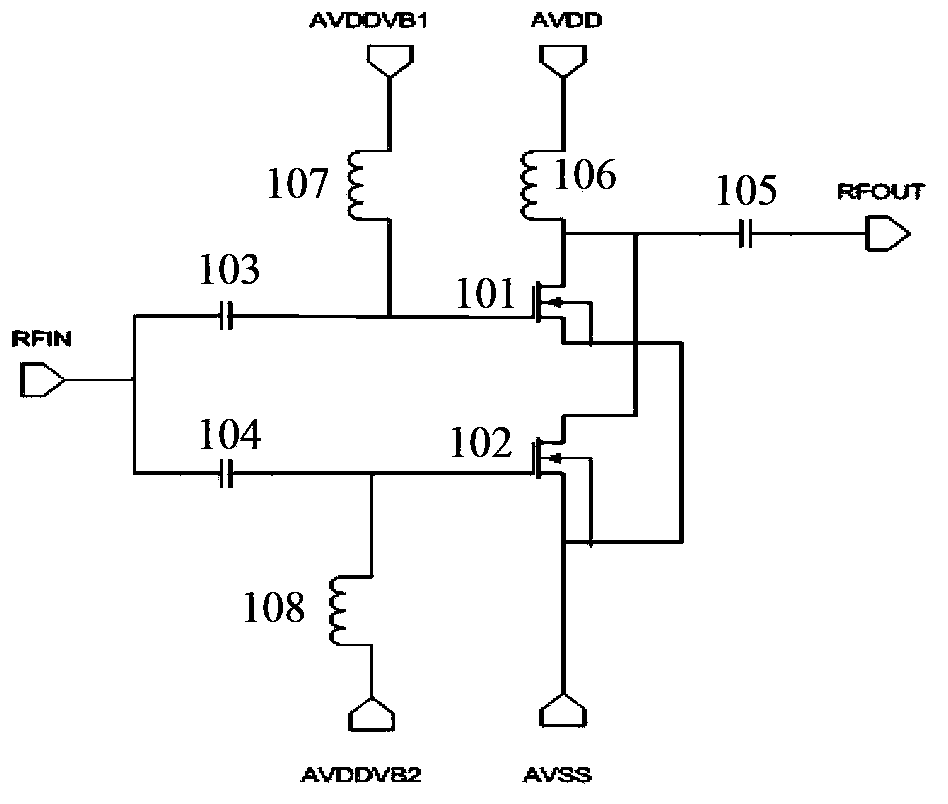CMOS radio frequency power amplifier
A radio frequency power and amplifier technology, applied in the field of semiconductor integrated circuit devices, can solve problems such as difficult design optimization, low gain, and limited improvement in linearity, and achieve the goals of improving gain and noise performance, overall function optimization, and overall function improvement Effect
- Summary
- Abstract
- Description
- Claims
- Application Information
AI Technical Summary
Problems solved by technology
Method used
Image
Examples
Embodiment Construction
[0016] Such as figure 2 Shown is a schematic structural diagram of a CMOS radio frequency power amplifier in an embodiment of the present invention. The CMOS radio frequency power amplifier in an embodiment of the present invention includes:
[0017] The NMOS transistor 1 is connected in a common source amplifier mode. The gate of the NMOS transistor 1 inputs the radio frequency input signal RFIN through the first capacitor 3, and the drain outputs the radio frequency output signal RFOUT through the third capacitor 5; The gate of the NMOS transistor 1 is connected to the bias capacitor 7, and the bias circuit 7 is connected to the bias voltage source AVDDVB1. The bias circuit 7 of the NMOS transistor 1 makes the MOS transistor work in the saturation region. The drain of the NMOS transistor 1 is connected to a positive power supply AVDD through a first resistor 6, and the source of the NMOS transistor 1 is grounded or a negative power supply AVSS.
[0018] NPN transistor 2, the NPN...
PUM
 Login to View More
Login to View More Abstract
Description
Claims
Application Information
 Login to View More
Login to View More - R&D
- Intellectual Property
- Life Sciences
- Materials
- Tech Scout
- Unparalleled Data Quality
- Higher Quality Content
- 60% Fewer Hallucinations
Browse by: Latest US Patents, China's latest patents, Technical Efficacy Thesaurus, Application Domain, Technology Topic, Popular Technical Reports.
© 2025 PatSnap. All rights reserved.Legal|Privacy policy|Modern Slavery Act Transparency Statement|Sitemap|About US| Contact US: help@patsnap.com



